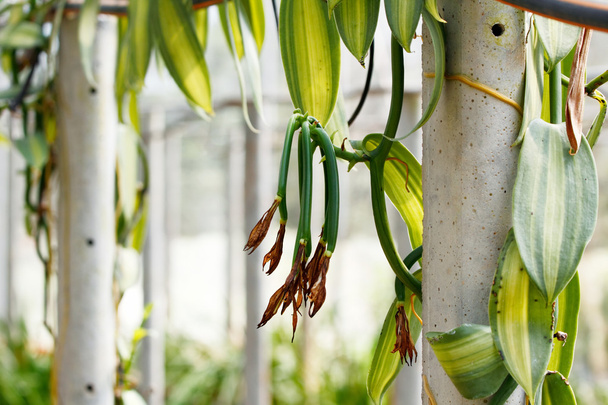By djavanilla September 15, 2019
Vanilla is one of the most recognizable and widely used flavors in the world, found in everything from ice creams to perfumes. But despite its common presence, the process of producing vanilla is quite intricate and labor-intensive, making it one of the most expensive spices after saffron.
The Origins of Vanilla
Vanilla originates from the tropical regions of Mexico, where it was first cultivated by the Totonac people. The Aztecs later adopted the use of vanilla and combined it with cocoa to make a drink called xocolatl, an early form of hot chocolate. Vanilla was introduced to Europe in the 16th century by Spanish explorers, where it gained immense popularity.
The vanilla plant itself is a tropical orchid, and its vanilla beans, or pods, are the fruits of the plant. The scientific name of vanilla is Vanilla planifolia, and it thrives in hot, humid climates. Although it was first grown in Mexico, it is now widely cultivated in other tropical regions, including Madagascar, Indonesia, and parts of the Caribbean.
How Vanilla is Produced
Producing vanilla is a painstaking process. The vanilla orchid needs to be hand-pollinated to produce the pods, as the natural pollinators (a species of Melipona bee) are scarce outside Mexico. This labor-intensive process significantly contributes to the high cost of vanilla.
Once pollinated, the vanilla pods take several months to grow and mature. After harvesting, the pods undergo a curing process that can last several months. This process includes drying the pods in the sun, sweating them in controlled environments, and allowing them to develop their characteristic flavor. During curing, the pods transform from green to a rich brown color and develop the complex, sweet, and aromatic flavors associated with vanilla.
“Vanilla is one of the most labor-intensive crops in the world, requiring not only ideal growing conditions but also meticulous hand-pollination. Its complex cultivation process makes it a valuable commodity, yet it also demonstrates the delicate balance between nature and human intervention.”
Uses of Vanilla
Vanilla is perhaps most famous for its use in desserts, especially in ice cream and baked goods like cakes and cookies. It also pairs well with chocolate, coffee, and fruits. Vanilla extract, made by soaking vanilla beans in alcohol, is a staple ingredient in many kitchens worldwide.
Beyond its culinary uses, vanilla is widely used in the fragrance and cosmetics industries. Its sweet, comforting scent is often found in perfumes, lotions, and candles.
The Economics of Vanilla
Vanilla is one of the most expensive spices globally, primarily due to the labor-intensive nature of its production. The price of vanilla can fluctuate significantly, often reaching hundreds of dollars per kilogram. This is partly because of the demand and partly due to environmental factors such as cyclones that can devastate vanilla crops, especially in Madagascar, the world’s leading producer of vanilla.
Vanilla may seem like a simple, everyday flavor, but its cultivation and production tell a story of complexity, tradition, and craftsmanship. Its wide-ranging uses and beloved flavor have cemented its place as one of the world’s most cherished spices. Whether in a scoop of ice cream or a luxurious perfume, vanilla’s sweet essence continues to captivate people globally.
